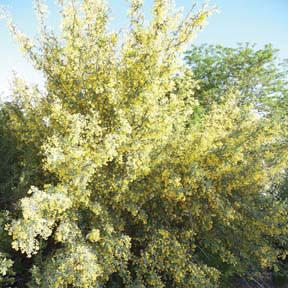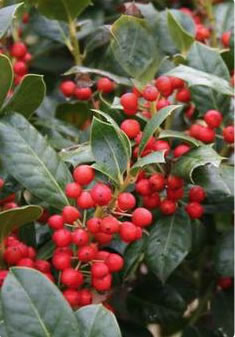 |
 |
Plant w/flowers |
Description
"Leaf: Alternate, pinnately compound, evergreen, 3 to 5 inches long; 3 to 5, narrow, long holly-like leaflets each 2 to 3 inches long, sharply spined teeth, thick, waxy, gray to blue-green above and paler green below.
Flower: Perfect, small (1/2 inch) bright yellow flowers are borne in upright, clusters of 3 to 7 flowers, appearing in spring.
Fruit: Bright red, juicy berries, 1/2 inch across, edible, but sour.
Twig: Main stems are largely unbranched, stiff and upright with compound leaves arising directly from main stems; reddish brown when young, turning gray-brown with age.
Bark: Gray-brown, developing shallow fissures and ridges.
Form: A wide spreading upright shrub reaching up to 12 feet and nearly as wide." (Virginia Tech Dendrology)
Ethnobotanical Uses
Food:
"Apache Fruit Berries eaten fresh. Apache, Chiricahua & Mescalero Preserves Fruit cooked with a sweet substance, strained, and eaten as jelly." (Moerman 329)
"Mahonia haematocarpa, the Red Hollygrape, or Mexican Barberry, has blood red berries that are used to make jelly. Mahonea nervosa, is known as the Oregon Grape. It’s ripe fruit are too acidic to eat raw but are stewed with sugar or other fruits and or made into jelly or pies. They are used to help the flavor of milder fruits or to make a lemon-ade like drink. Young leaves are simmered in water and eaten as a snack." (Eat the Weeds)
Medicine:
"Apache, Mescalero Eye Medicine Inner wood shavings soaked in water and used as an eyewash." (Moerman 329)
Other Uses:
"Apache, Mescalero Yellow Root shavings used to make a yellow dye for hides." (Moerman 329)
Internet Resources